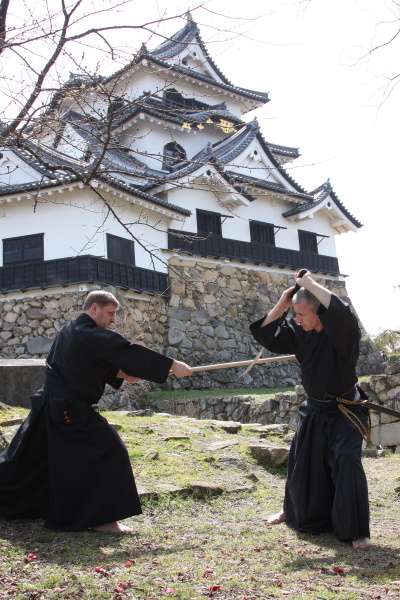According to the classification used in modern Japan, all martial arts are divided into traditional arts of war (Koryu Bujutsu) and the so-called modern martial arts (Gendai Budo). Besides Koryu Bujutsu, the classical tradition of war in Japan, Budo, is described with such terms as Kobujutsu, Kobudo and Koryu Budo.

Therefore, Koryu Budo can be translated as the “classical way of the warrior”. Nowadays, the Japanese words of “Bujutsu” and “Budo” are being used as synonyms to indicate a wide range of skills that are relevant to martial arts. During the Edo period (17th century – mid-19th century) these words had a completely different meaning and connotation. “Bujutsu” stood for combat techniques, while “Budo” signified the “way of the warrior”, the ideal way of life that was an obligation for any samurai with Bujutsu skills. At the time, there was a total of 18 martial arts (Bugei Juhappan), including shooting bows and firearms, horse riding, use of cold weapons, swimming if full armour, self-defence without a weapon etc.
When the Edo shogunate managed to unite the country at the start of the 17th century it brought about stability and a weakening of the Bujutsu spirit with it. Martial art techniques were honed through systemic practice with an accent on forms and formal movements. It was thought that it would enable the achievement of perfect spiritual condition based on the teachings of Zen. As a result, the practice of martial arts evolved from learning specific movements to harsh preparation, which fostered a healthy mind and body. In other words, Bujutsu became Budo and contained within itself a philosophy of a certain way of life.
Kobudo – the “old” (ko) “way of the warrior” (budo) — is the title applied to various traditional (old) martial art schools, all of which employed a complex approach as they, in the name of an underlying idea or objective, practiced techniques with various weapons (sword, knife, staff, baton, spear, sickle, rope, chain, their modified versions etc.) or without them. The training started with practical skills, but, over time, moved to more spiritual and psychological aspects. In the present time these schools study the legacy of human wisdom accumulated over centuries, and how the information contained within it can be used to improve the spiritual- psychological level or to solve problems people encounter in their lives. Overall, Kobudo is divided into “Okinawan” and “Japanese” branches.

